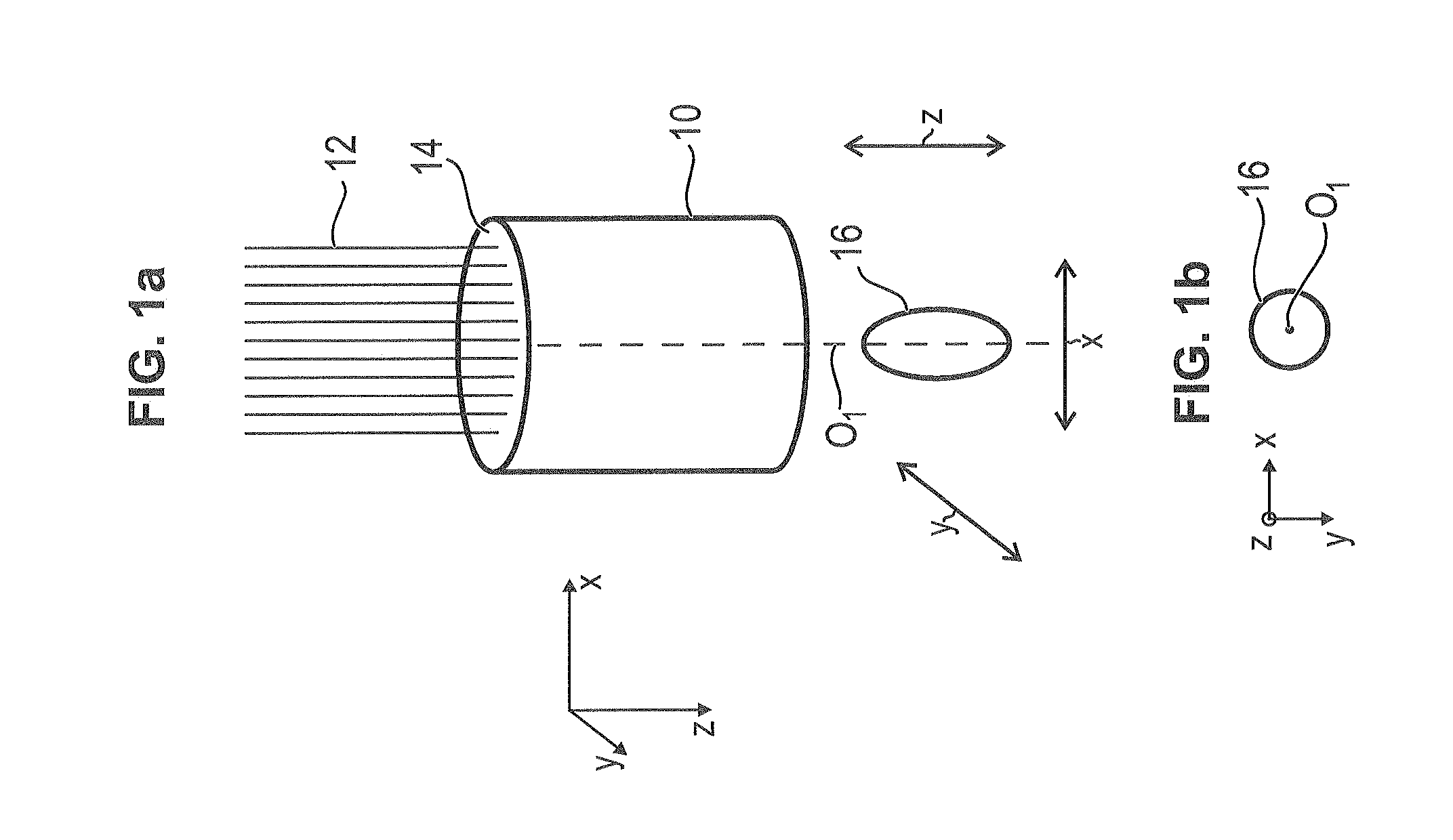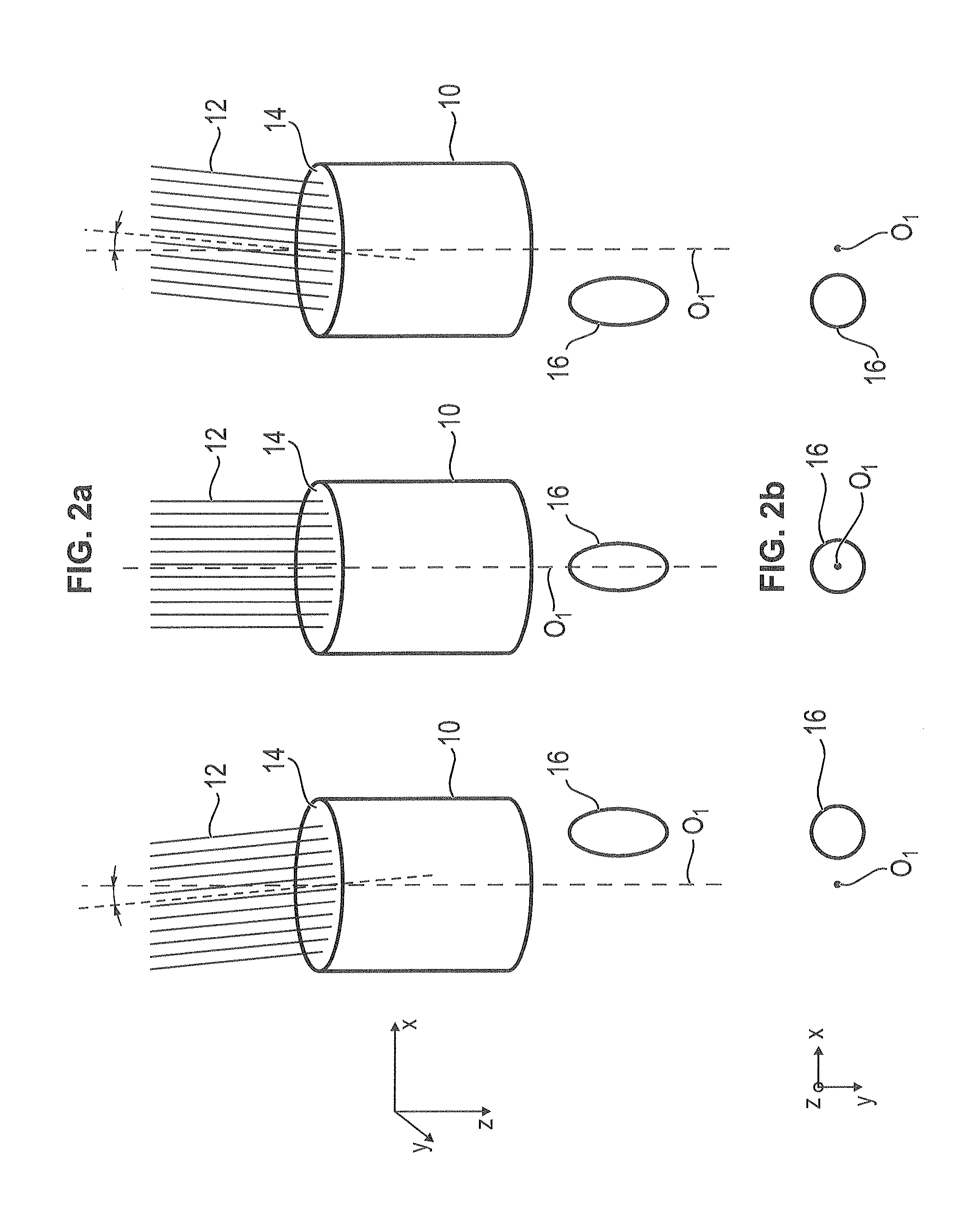Scanning Microscope and Method for Light-Microscopic Imaging of an Object
a scanning microscope and object technology, applied in the field of scanning microscopes, can solve the problems of not being able to place spherical objects in collision-free positions under such a right-angled arrangement of objectives, shading by surrounding tissue, and unable to image certain biological objects, etc., to achieve high spatial resolution and large surface area
- Summary
- Abstract
- Description
- Claims
- Application Information
AI Technical Summary
Benefits of technology
Problems solved by technology
Method used
Image
Examples
Embodiment Construction
[0054]The principle of off-center underillumination of the [entrance] pupil according to the present invention will now be described with reference to FIGS. 1 through 4. In particular, it will be described how, according to the present invention, illumination optics 10 produce an illumination focus 16 from an illuminating light beam 12 incident on an entrance pupil of illumination optics 10. In this connection, it should be noted that the above-mentioned figures are purely schematic and are merely intended to facilitate the understanding of the present invention.
[0055]Referring first of all to FIG. 1a, the bundle of rays constituting illuminating light beam 12 uses the full aperture of illumination optics 10; i.e., passes through the entire area of entrance pupil 14 of illumination optics 10, which is typical in conventional point-by-point confocal scanning. In FIG. 1a, the optical axis of illumination optics 10 is denoted by O1. In the case depicted in FIG. 1a, illuminating light b...
PUM
 Login to View More
Login to View More Abstract
Description
Claims
Application Information
 Login to View More
Login to View More - R&D
- Intellectual Property
- Life Sciences
- Materials
- Tech Scout
- Unparalleled Data Quality
- Higher Quality Content
- 60% Fewer Hallucinations
Browse by: Latest US Patents, China's latest patents, Technical Efficacy Thesaurus, Application Domain, Technology Topic, Popular Technical Reports.
© 2025 PatSnap. All rights reserved.Legal|Privacy policy|Modern Slavery Act Transparency Statement|Sitemap|About US| Contact US: help@patsnap.com



